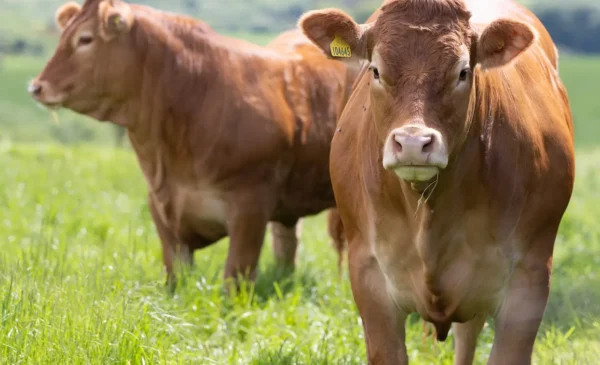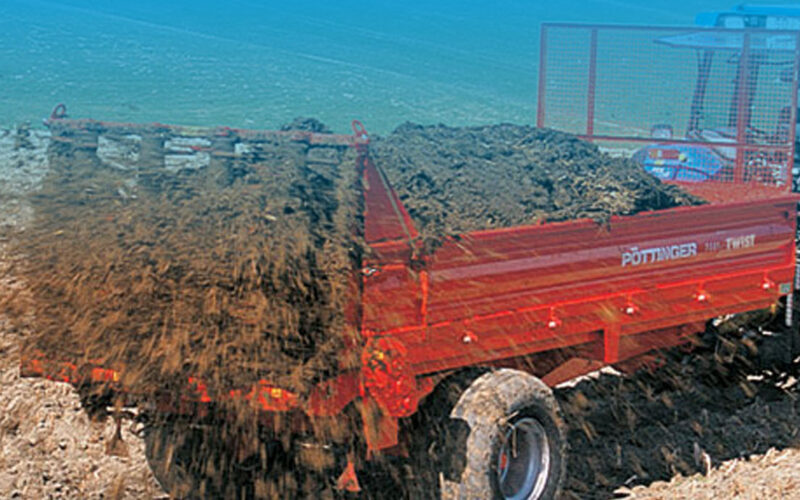Livestock manures are a valuable source of nutrients and organic matter, helping to support soil fertility. Nutrients lost to the surrounding environment are a financial loss to the business as well as a pollution risk. Taking account of nutrients added to land in slurry and manure can lead to savings on the annual fertiliser bill and reduce your farm carbon footprint.
The Diffuse Pollution General Binding Rules (GBRs), introduced in 2008 cover storage and application of fertilisers, including slurry and manures, specifying minimum working distances near rivers, burns, ditches, lochs and wetlands. The Farming and Water Scotland booklet ‘Know the Rules’ outlines the key requirements.
If you are in a Nitrate Vulnerable Zone (NVZ), The NVZ “Guidelines For Farmers in Nitrate Vulnerable Zones” explains manure storage requirements and gives an in-depth description of how to draw up a fertiliser and manure plan to comply with the NVZ Action Programme.
What are the benefits to you and your business?
- Potential savings on your fertiliser bill. A 100 cow dairy herd could produce slurry with a nutrient value equivalent to saving around £1,500 on your annual fertiliser bill.
- Nutrient levels, especially phosphorus (P) and potassium (K), can build up in soils year on year. It may not be necessary to add as much inorganic fertiliser as you think. Soil testing on a four to five-year cycle will show if soil reserves are already sufficient in P and K.
- Making best use of home-produced nutrients can reduce the need for bought in fertilisers, demonstrating Scottish agriculture’s efforts to reduce greenhouse gas emissions.
- Targeting manure and slurry applications to crop nutrient requirement can reduce nutrient loss. Most of the nitrogen (N) applied to fields during the late autumn and winter months can be lost through leaching due to low crop demand, representing a financial loss to the business and poor environmental performance.
- In many cases, savings on the fertiliser bill will cover the cost of soil testing.
- Keep you on the right side of the regulations.
Taking a closer look
Slurry and manure from both housed and grazing livestock can make a significant contribution to the nutrient status of your land. Approximately three-quarters of nutrients in livestock feed are present in their dung and urine, giving a rich and valuable source of NPK. Nutrients collected from housed livestock can be preserved and ammonia emissions reduced through small changes in handling and storage. For example, using a well-sited temporary field heap can preserve and increase the nutrient availability and reduce the amount of manure to be handled as the heap decomposes. This in turn will make it easier to spread. Mixing slurry with water may make it easier to handle, but too much water could dilute the nutrient value and increase the total volume to be applied. Where possible, quick incorporation of slurry and manure into the soil will maximise nutrient potential. The less time nutrients are on the surface, then the less chance they will be washed away in surface run-off or escape to the air as a gas that contributes to climate change.
Points to consider
- Know the Rules. A minimum 10m no-spread zone around any river, burn, ditch or loch as measured from the top of the bank, and a 50m no-spread zone around springs that supply water for human consumption, or a well or borehole (that is not capped to prevent water ingress) are now legal requirements under the Diffuse Pollution General Binding Rules (GBR 18).
- Know nutrient levels in soils, manure and slurry. Do not apply nutrients in excess of what is required by the growing crop (GBR 18). Knowing nutrient levels in soils and livestock manures and slurries allows you to re-assess fertiliser requirements, maximise production, minimise cost and reduce pollution risk to ditches, burns, rivers and groundwater through loss of excess nutrients.
- Reduce midden run-off. This will preserve the nutrient value within manure whilst also reducing the potential for pollution.
- Store solid manure in deep-sided stacks, preferably covered, to maintain the nutrient level. Make sure field heaps are sited at least 10m from any watercourse or ditch, 50m of any spring that supplies water for human consumption or uncapped well or borehole. On sloping land, these distances may need to be increased to prevent nutrients entering the surface water (GBR 18).
- Consider covering your slurry store. If planning new a new slurry store or lagoon, fitting a cover at installation will help to retain nutrients, keep rainwater out of your store preserving space for slurry, and may be cheaper than retrofitting, should legislation change.
- Reduce the amount of water mixing with slurries or manures. SEPA has estimated that around 40% of storage capacity in a slurry lagoon in west Scotland could be taken up by rainwater. Less water in the mixture will keep slurry and manure volume low and nutrient value high. Section 1 “Managing Dirty Water Around the Steading” provides more information.
- Consider the location of future field heaps. Do not site field heaps on sandy or gravely areas or recently drained land. Make sure the heap is at least 10m away from any watercourses and 50m away from a spring, well or borehole (GBR 18).
- Devise a Nutrient Management Plan for your farm. This can save you money, improve your nutrient use efficiency and help you to identify ways of making the most out of the available nutrients in slurries and manures and demonstrate a reduction in your farm carbon footprint. The recommendations contained within the SAC Technical Notes (TN650 “Optimising the application of bulky organic fertilisers”*) combined with free nutrient planning tools such as PLANET Scotland (designed for planning nutrient budgets at individual field-levels) and/or MANNER-NPK (to provide an estimate of crop NPK supply from organic materials) will help you create a working nutrient budget for your farm. Alternatively, your agricultural consultant will be able to assist you with a nutrient management plan. See Appendix 1 for further information.
There is more information on managing slurry and manure in the ‘Know the Rules’ booklet and on the Farming and Water Scotland website. There is also useful information available for those considering a slurry lagoon from the Farm Advisory Service (FAS) website.
This information is updated and abridged from The 4 Point Plan (2003).
*Since this document was written, FAS TN736 has been released which replaces SAC TN650
Related resources

Better Nutrient use: Working it Out
After completing this section, you will know the amount of slurry and manure1 generated by your…

Managing Water Margins
How we manage land can have a big impact on surrounding water quality. Spreading operations…


